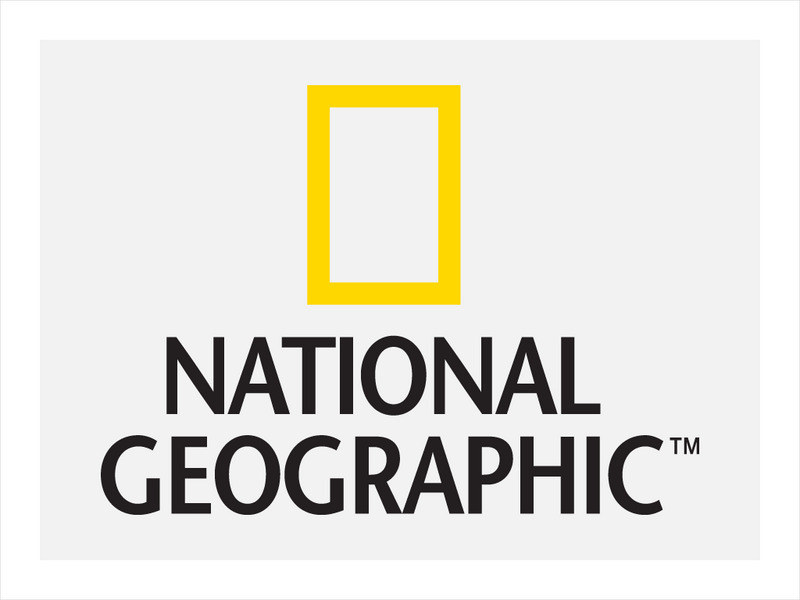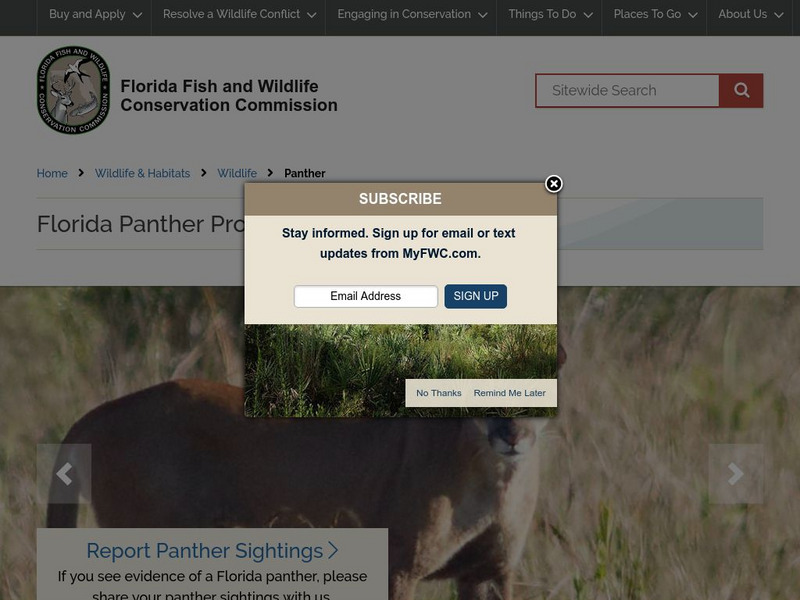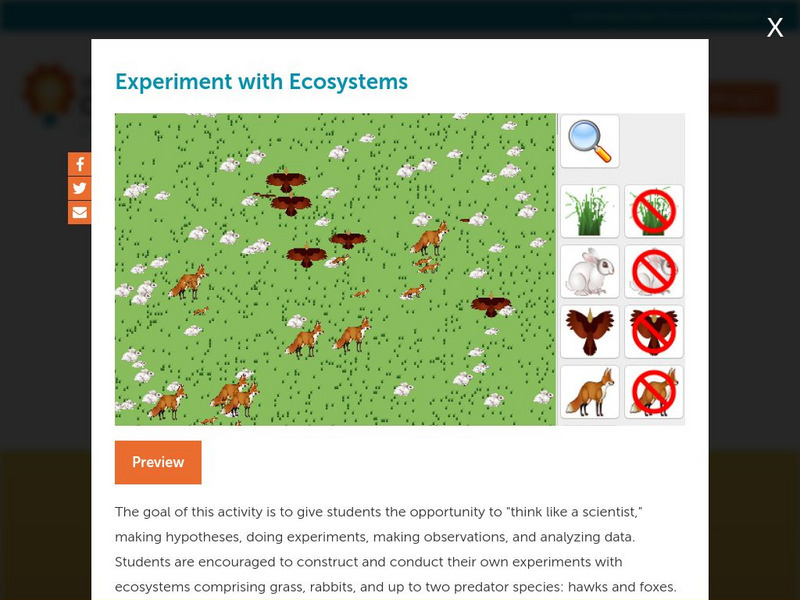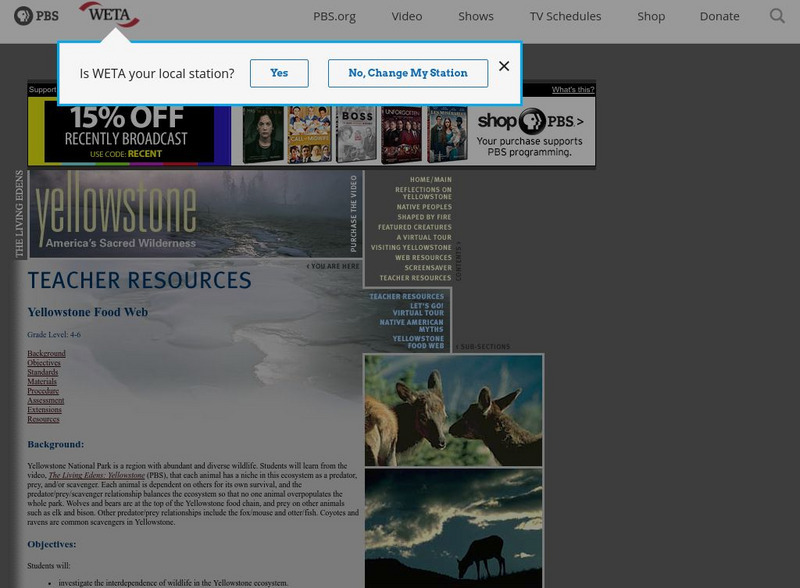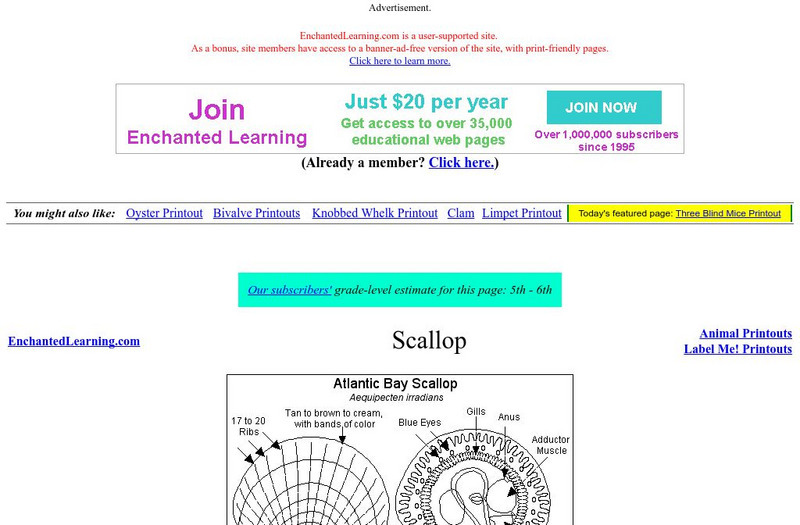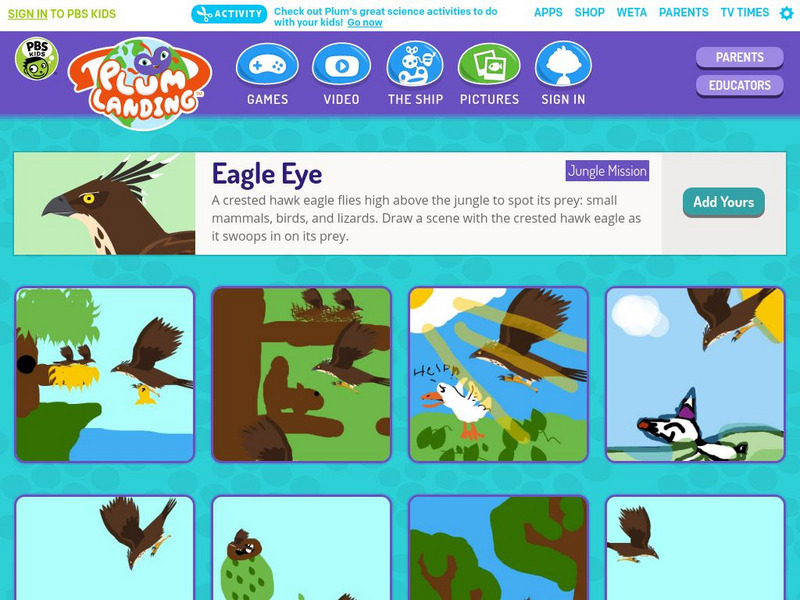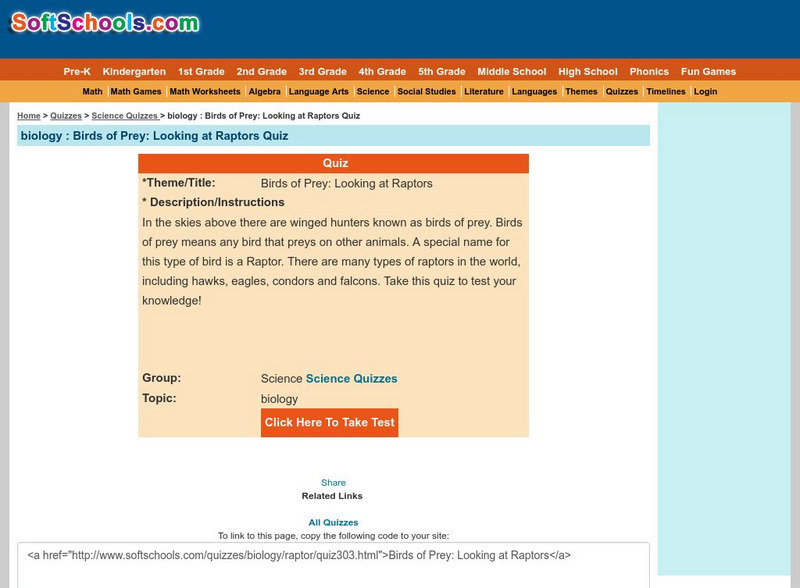Hi, what do you want to do?
Sea World Parks & Entertainment
Sea World: Raptors
Outlines the characteristics of birds of prey, including classification, habitat, behaviors, and conservation. Helps students identify with these birds by integrating a list of "Books for Young Readers." Information at a level of upper...
National Geographic
National Geographic: Coral Reef Food Web
Explore the food web in a coral reef with these illustration. Identify the consumers, producers, and decomposers that are located within this ecosystem. Site includes illustration exploring the different food chains as well as questions...
CK-12 Foundation
Ck 12: Episd: Predation
[Free Registration/Login may be required to access all resource tools.] Discover the predator prey relationship and the ways organisms adapt to predation. Understand the impact predation has on population size and evolution.
Other
Florida Panther Net: The Florida Panther
Get all the current news and information on the Florida panther.
Annenberg Foundation
Annenberg Learner: The Habitable Planet: Ecology Lab
Create the parameters of your own ecosystem by choosing which producers and consumers live there. Visualize how the food web operates and species populations change. This simulator mimics the food web within a typical ecosystem and gives...
Other
Kidwings: Virtual Owl Pellet Dissection
A complete lesson on owl pellets. Students can read information, watch a tutorial, and use their computer mouse to complete a dissection simulation right there on the screen.
Concord Consortium
Concord Consortium: Stem Resources: Experiment With Ecosystems
Learn what happens to different populations of organisms as their ecosystem changes. Design your own experiment and make your own guesses with what the result will be with this virtual ecosystem. Also experiment with producer/consumer...
PBS
Pbs Kids: Plum Landing: The Gray: Mountain Mission
After watching the "The Gray" episode of PBS Kids' Plum Landing, students will draw a picture of gray wolves that are traveling in a pack.
PBS
Pbs Teachers:yellowstone: Yellowstone Food Web
Investigate the interdependence of wildlife in the Yellowstone ecosystem and draw an ecosystem showing the interdependence of life forms.
Earth Life
Earth Life: Chilipod
Information on the diverse types of centipedes that exist in different habitats.
University of Texas at Austin
Univ. Of Texas: Texas Memorial Museum: Creating a Freshwater Ecosystem [Pdf]
An activity where students create a mobile that represent a freshwater ecosystem that appears in nature. Requires Adobe Reader [PDF].
Other
University of Wyoming: Predator Prey Database
You can download a database made by Dr. Robert LaVinge. The database will give you almost every predator prey relationship.
Other
Zephyrus: Food Puzzle Chain
Answer these ten interactive questions about ecological feeding relationships by choosing the correct image that completes each food chain.
PBS
Pbs Kids: Plum Landing: Fence for a Fox
This PBS Kids activity is an extension of a Plum Landing episode featuring foxes in Australia. Students will learn basic information about these foxes. Students will also design a fence to protect chickens from these nonindigenous foxes.
PBS
Pbs Kids: Plum Landing: Link to the Lynx
This PBS Kids activity is an extension of a Plum Landing episode featuring the lynx. Students will learn basic information about the lynx; students will also use online drawing tools to design a scene with a lynx hunting for food.
Enchanted Learning
Enchanted Learning: Scallop
Contains information on scallops, a diagram, as well as their predators, anatomy, and diet.
PBS
Pbs Kids: Plum Landing: Eagle Eye
This PBS Kids activity is an extension of a Plum Landing episode featuring crested hawk eagle in the jungle. Using the online tools, students will draw a crested hawk eagle swooping down to grab its prey.
Soft Schools
Soft Schools: Birds of Prey: Looking at Raptors Quiz
Take this interactive, multiple-choice quiz over birds of prey, then review your score and any missed questions at the end.
Science Buddies
Science Buddies: M&m Survival Challenge
In the wild, there are two types of animals: the hunters and the hunted. A good predator is always on the prowl for fresh prey. What can an animal do to stay off of the menu? Find out how some animals use camouflage, and why sometimes it...
Science Struck
Science Struck: Difference Between Food Chain and Food Web
Explains the characteristics of food chains and food web; the different levels of producers, consumers, and decomposers; and the differences between food chains and food webs. Includes charts and a Venn diagram comparing the two.
PBS
Pbs Learning Media: Catch Me if You Can
Students are asked to explain the predator/prey relationship and how it helps to maintain the balance of the ecosystems.
Other
Buzzle.com: Animal Sake: 10 Examples of Predator Prey Relationships
Explains what a predator-prey relationship is and describes ten examples of this.
CK-12 Foundation
Ck 12: Life Science: Predation
[Free Registration/Login may be required to access all resource tools.] Predation is another mechanism in which species interact with each other. Predation is when a predator organism feeds on another living organism or organisms, known...
TED Talks
Ted: Ted Ed: Can Animals Be Deceptive?
Eldridge Adams details the surprising complexity of how animals manipulate predators, prey and their rivals.






